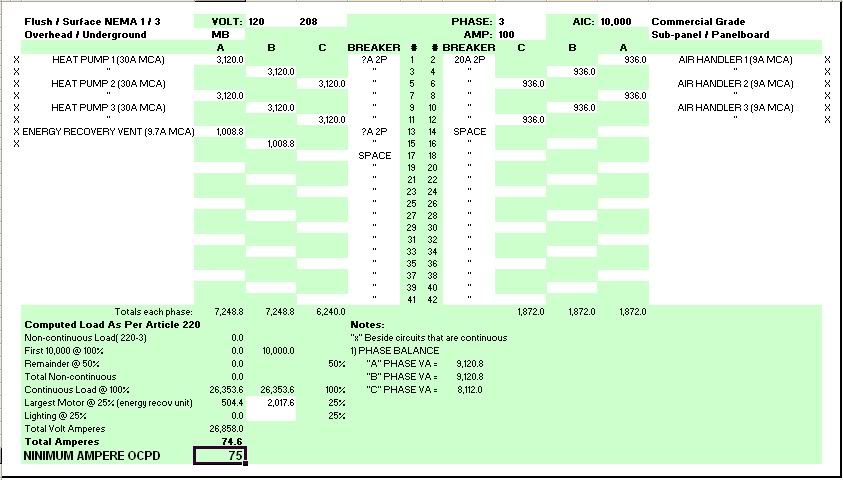kwired
Electron manager
- Location
- NE Nebraska
- Occupation
- EC
I think you missed something. Your balanced load is three (3) 4992VA loads and three (3) 1498VA loads. That gives a balanced load of 19470VA.
19470VA balanced load at 208V, 3ph give a current of 54.04 Amps. So A, B and C would see 54.04 Amps. And adding the last unbalanced load (of 1622VA) between A and B would add 7.8 Amps to A and B.
So the total unbalanced load would be 61.84 Amps on A and B, and 54.04 Amps on C.
(As a side note, you probably can't multiply the MCA of the heat pump by 0.8 to get the load current. This would only work for a single motor load.)
That is same result I come up with (with the provided load information). I also agree that the actual current rating would be best to use for the calculation and not the MCA. Using the MCA will not be a problem other than you will likely be able to use smaller feeder than what using MCA will give as a result.
I think it is easier to come up with total VA that is balanced then divide by voltage and divide again by 1.73 to come up with total amps then add any unbalanced amps to which ever phases it is connected to. Do not try to add amps per phase per load - you will get thrown off easily. This one was not too hard with all 208 volt loads. Throw in some 120 volt loads and it will get even more complicated.

